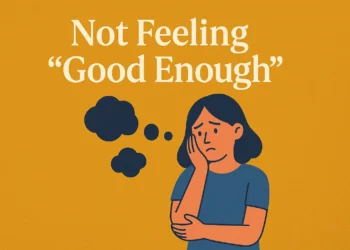“The obstacle is the way,” wrote Ryan Holiday, capturing a truth about human struggles. This idea applies perfectly to understanding inner resistance – that invisible force holding people back from growth. Far from being a flaw, it’s a natural part of how minds respond to challenges.
As Leo Babauta explains, resistance often shows up as procrastination or mindless scrolling. It’s the urge to check emails instead of starting a project, or the voice saying “I’ll do it tomorrow.” But this isn’t laziness – it’s a survival instinct trying to protect you from perceived threats.
Rather than fighting these feelings, curious observation reveals their purpose. Resistance flares when stepping outside comfort zones, whether launching a business or having tough conversations. It signals opportunities for growth, not enemies to defeat.
By reframing resistance as a compass, people unlock its hidden wisdom. That tension before a big presentation? It shows you care about doing meaningful work. The dread of networking events? It highlights values around authentic connections.
Key Takeaways
- Inner resistance manifests through procrastination and distraction
- It originates from primal survival mechanisms
- Resistance points toward growth opportunities
- Emotional responses contain clues about core values
- Mindful awareness transforms resistance into guidance
Understanding the Nature of Inner Resistance
Imagine standing at a trailhead with your boots laced tight – legs ready to climb, but something whispers “turn back.” This tug-of-war between intention and hesitation reveals resistance at work. Psychologists define it as the mind’s automatic response to perceived threats, not laziness or weakness.

Exploring the Concept and Definitions
Leo Babauta compares resistance to weather patterns – temporary states requiring observation, not judgment. It surfaces when growth demands change, like learning new skills or setting boundaries. Therapist Nancy Colier notes:
“What we avoid points directly to what matters most.”
How Resistance Affects Your Thoughts and Actions
That email you keep postponing? The gym bag gathering dust? These aren’t random acts. Resistance distorts priorities, making trivial tasks feel urgent while meaningful ones loom large. Ask yourself: What makes this task feel heavy? Is it fear of imperfection, or maybe valuing comfort over progress?
Small steps dismantle big barriers. Babauta suggests writing one sentence instead of a full page, or stretching for two minutes rather than an hour. These micro-actions rewire the brain’s threat response, proving movement creates momentum.
Recognizing the Signs and Symptoms in Daily Life
Your alarm buzzes at 6 AM for that morning jog you planned – but your hand slaps snooze while your mind justifies “just five more minutes.” This tug-of-war between intention and inertia reveals resistance in action. It wears many disguises, from clenched jaws during important meetings to repeatedly rescheduling tough conversations.

Physical, Emotional, and Behavioral Indicators
A tight chest before sending a proposal? Nagging fatigue when tackling creative projects? These bodily signals often precede conscious awareness of hesitation. Research shows avoidance patterns frequently manifest as:
- Unexplained headaches or digestive issues during goal-related tasks
- Sudden urges to reorganize drawers instead of writing that business plan
- Irritability when friends ask about progress on personal goals
Impact on Work, Relationships, and Personal Goals
A marketing director might delay launching a passion project for years, trapped in “one more revision” cycles. Parents may snap at children while avoiding difficult financial discussions. These patterns create ripple effects – missed promotions, strained connections, abandoned dreams.
Consider the freelancer who cancels client calls last-minute, or the artist who never shares their portfolio. Over time, these small dodges cement into identity-shaping narratives: “I’m not someone who finishes things.” Breaking the cycle starts with noticing when comfort-seeking masquerades as productivity.
Working with Inner Resistance to Transform Your Life
What if the very force slowing you down could become your greatest accelerator? Kym Wilson’s research reveals that tension before change often signals alignment with core values, not weakness. Instead of battling hesitation, strategic engagement unlocks its hidden potential.

Embracing Resistance as an Ally and Teacher
That knot in your stomach before public speaking? It’s not a stop sign – it’s a roadmap. Wilson suggests asking: “What’s this feeling protecting me from?” Maybe it’s guarding against embarrassment or preserving energy. These answers reveal personal boundaries worth honoring.
Actionable Techniques: The First Step to Overcoming It
Babauta’s 2-minute rule turns mountains into molehills. Commit to:
| Traditional Approach | Transformative Technique |
|---|---|
| Writing 1,000 words daily | Type one sentence |
| Hour-long workouts | Three mindful stretches |
| Perfect presentations | Record 30-second voice notes |
This method tricks the brain into starting – momentum often carries you further than planned.
Integrating Habits and Small Actions for Lasting Change
Consistency beats intensity. Pair new behaviors with existing routines:
- Review goals while brewing morning coffee
- Practice deep breathing at stoplights
- Journal three wins before bed
These micro-shifts compound over weeks, rewiring neural pathways. As Wilson notes: “Small steps taken daily outpace grand plans gathering dust.”
Overcoming Resistance: A Transformative Approach
Self-sabotage often wears the disguise of productivity. That “just one more edit” mindset before sharing creative work, or reorganizing your desk instead of writing a proposal – these patterns reveal how internal “shoulds” fuel avoidance. Breaking free requires treating these mental traps as invitations for growth.

Managing Self-Sabotage and Internal “Shoulds”
The Sedona Method teaches a powerful truth: feeling resistance fully often dissolves its power. When thoughts like “I should network more” clash with social anxiety, pause. Ask: “Does this ‘should’ align with my authentic goals, or is it societal noise?”
Consider these shifts:
| Self-Sabotaging Thought | Empowered Action |
|---|---|
| “I should work 12-hour days” | Schedule focused 90-minute blocks |
| “I should please everyone” | Set one boundary daily |
| “I should be perfect” | Share unfinished drafts weekly |
Behavioral scientist Mel Robbins’ 5-second rule interrupts hesitation. When resistance whispers “wait until you’re ready,” count down from five and act. This builds neural pathways linking intention to motion.
Replace “should” with “choose.” Instead of “I should exercise,” try “I choose movement that energizes me.” This simple language tweak transforms obligations into conscious decisions aligned with personal values.
Progress comes through persistent micro-actions, not overnight revolutions. Track small wins – sent one difficult email? Celebrate. Wrote three sentences? Victory. Over time, these steps reshape identity from “someone who hesitates” to “someone who moves forward.”
Conclusion
The journey through understanding resistance reveals its power as a transformative ally. When approached with curiosity, hesitation becomes a roadmap – highlighting values, priorities, and growth edges. The key lies not in eliminating these feelings, but in decoding their messages through thoughtful questions and intentional action.
Professional goals and personal aspirations thrive when resistance is reframed. Techniques like subconscious reprogramming or micro-actions prove that progress compounds. What feels like a barrier today often becomes tomorrow’s breakthrough story.
Every challenge contains answers waiting to be uncovered. Acknowledge that there might be a lot to navigate, but each small step reshapes habits and beliefs. People who embrace this process discover resilience they never knew they had.
View resistance as a dance partner rather than an opponent. With consistent effort, what once held you back becomes the fuel for forward motion. The path to growth isn’t about perfection – it’s about showing up, again and again, for the life you choose to build.
FAQ
How do I know if I’m experiencing resistance?
Look for patterns like procrastination, sudden fatigue, or negative self-talk. These often signal a clash between your conscious goals and subconscious hesitations. Physical tension or avoidance behaviors can also indicate unresolved internal friction.
Can resistance affect my relationships?
Yes. Unexamined resistance may lead to defensiveness, poor communication, or emotional withdrawal. It can create barriers to vulnerability—a key ingredient for meaningful connections—by keeping interactions surface-level or conflict-prone.
What’s the fastest way to start addressing resistance?
Begin with small, intentional actions. Set a 5-minute timer for tasks you’ve avoided, or write down one limiting belief you want to challenge. Momentum builds through consistent micro-choices that prove change is possible.
Why do old habits resurface when trying to change?
Neural pathways strengthen with repetition, making familiar patterns feel safer. Transformation requires creating new mental routes through deliberate practice. Each conscious choice weakens old loops while building updated behavioral frameworks.
How does resistance differ from genuine intuition?
Resistance often feels heavy and fear-based, while intuition typically carries calm certainty. Test doubts by asking: “Is this keeping me safe or stuck?” True intuition aligns with core values rather than temporary discomfort.
Can productivity tools worsen resistance?
Sometimes. Over-reliance on systems without addressing root causes creates pressure cycles. Effective strategies balance structure with self-compassion—track progress without rigid perfectionism, using tools as guides rather than judges.




























































